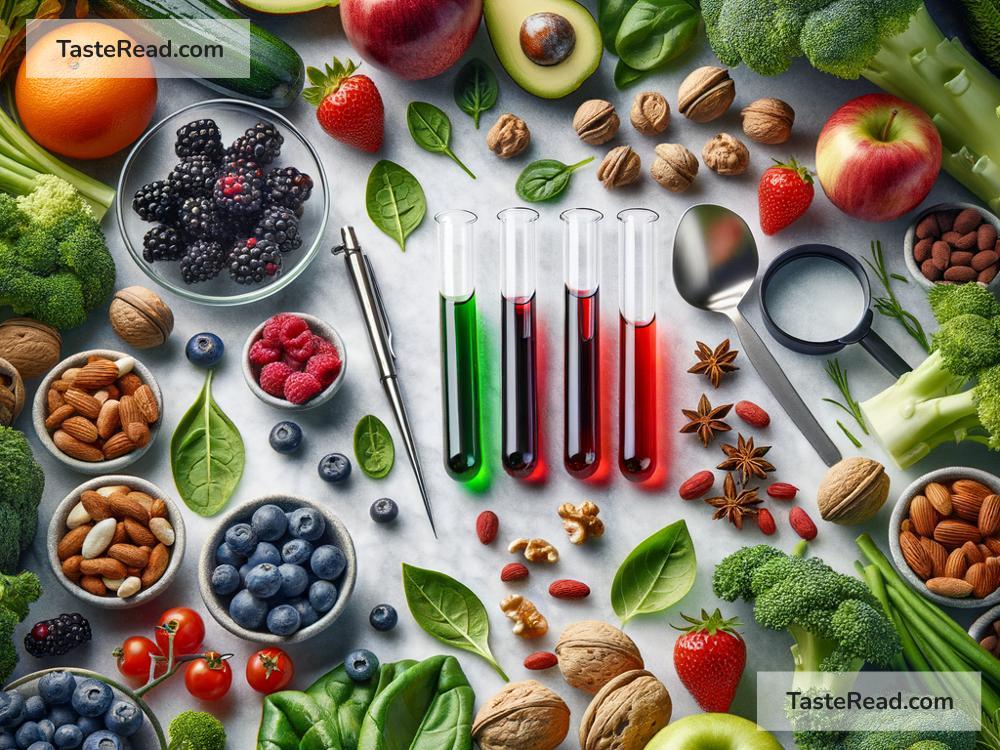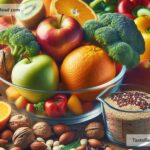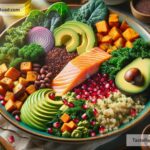The Science of Nutrient Bioavailability: What It Means and Why It Matters
When we eat food, we often think about the nutrients we’re consuming—vitamins, minerals, proteins, fats, and carbs. But there’s something hidden that most of us don’t consider: how much of those nutrients our bodies actually absorb and use. This process depends on something called nutrient bioavailability, and it plays a huge role in deciding how beneficial our food is for us.
Let’s dive into the fascinating science of nutrient bioavailability in simple terms to understand why it matters for our health.
What is Nutrient Bioavailability?
Bioavailability simply means how much of a nutrient from food or supplements is absorbed into the bloodstream and used by the body. Imagine eating a food rich in vitamin C, like an orange. The orange contains a certain amount of vitamin C, but not all of it gets absorbed by your body. Bioavailability is the percentage of vitamin C you actually take in and benefit from.
Why Does Bioavailability Matter?
You could be eating all the right foods, but if your body doesn’t absorb the nutrients properly, you won’t get the full benefits. That’s why bioavailability is important. For example:
- If you’re taking calcium to strengthen your bones, but your body absorbs only a small percentage of it, you might still develop weak bones.
- If your iron stores are low and your body can’t absorb it well, you may develop fatigue or anemia.
In short, bioavailability is the “bridge” between what you eat and how it helps your body.
Factors That Affect Nutrient Bioavailability
Many things can impact the bioavailability of nutrients. Here are some key factors:
1. The Form of the Nutrient
Some nutrients are easier for the body to absorb in certain forms. For example, iron from animal sources (called “heme iron”) is absorbed better than iron from plant sources (“non-heme iron”).
2. Food Combinations
The foods you pair together can affect absorption. For instance, vitamin C helps the body absorb iron, which is why pairing spinach (a source of non-heme iron) with some orange slices (rich in vitamin C) is a great idea.
On the other hand, certain foods can block absorption. For example, calcium can interfere with the absorption of iron, so high-calcium meals might reduce how much iron your body gets.
3. Cooking and Preparation
Cooking can change how well your body absorbs certain nutrients. For instance, cooking tomatoes releases more lycopene, an antioxidant, making it easier for your body to use. However, excessive heat can destroy delicate nutrients like vitamin C.
4. Your Digestive Health
Your stomach plays a big role in absorption. If you have digestive issues like acid reflux, irritable bowel syndrome (IBS), or problems producing digestive enzymes, your ability to absorb nutrients may decrease.
5. Age and Overall Health
As we age, our bodies may not absorb nutrients as efficiently. Pregnant women, people with chronic illnesses, or individuals taking certain medications may also have altered nutrient absorption.
6. Anti-Nutrients
Some foods contain compounds called “anti-nutrients” that decrease bioavailability. An example is phytic acid in beans and whole grains, which can bind to minerals like zinc and iron, making them harder for your body to absorb.
How to Improve Bioavailability
The good news is that there are ways to enhance nutrient absorption. Here are some simple tips to maximize the benefits you get from your food:
1. Eat a Variety of Foods
Mixing different types of foods can help with better absorption. For example, pair iron-rich foods with vitamin C sources (such as chili peppers, strawberries, or citrus fruits). Or enjoy healthy fats with fat-soluble vitamins like vitamin D and vitamin A.
2. Prepare Foods Correctly
Some nutrients become more bioavailable when the food is cooked. For example, lightly steaming vegetables like broccoli not only makes them easier to digest but also helps unlock certain nutrients.
At the same time, avoid overcooking, which can destroy fragile nutrients like vitamin C.
3. Use Fermented Foods
Fermentation helps break down anti-nutrients like phytic acid. Foods like yogurt, kimchi, and sourdough bread contribute probiotics that improve digestion and, in turn, nutrient absorption.
4. Consider Timing
Sometimes, it’s not about what you eat but when you eat it. Avoid drinking tea or coffee with meals because these beverages contain tannins that block iron absorption. Instead, enjoy them between meals.
5. Supplement Wisely
If you aren’t getting enough vitamins and minerals, talk to a healthcare provider about supplements. But remember, not all supplements are equally bioavailable. Look for types that your body absorbs well, like calcium citrate instead of calcium carbonate.
The Future of Bioavailability Science
Scientists are working on ways to improve bioavailability even further. For example, they’re developing enhanced food formulations, fortified foods, and nutrient nanoparticles that dissolve easily in the body. Research is also uncovering how different gut bacteria can impact nutrient absorption, which opens up exciting possibilities for personalized nutrition.
Final Thoughts
The science of nutrient bioavailability shows us that it’s not just about what we eat—it’s also about how our body uses it. Even the healthiest foods can fail to deliver their benefits if we don’t absorb nutrients properly. By understanding the factors that affect bioavailability and making small changes, we can ensure we get the most out of our meals.
So, the next time you sit down to eat, think about your food not only as fuel but also as a source of nutrients. Make informed choices, and remember that your body works hard to extract and use all those valuable vitamins, minerals, and compounds from your meals. Let’s help it do its job as best we can!


